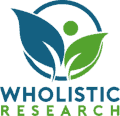Modafinil for ADHD in Adults: In-Depth Guide & Review

Attention Deficit Hyperactivity Disorder (ADHD) is one of the most common mental disorders diagnosed in children, but it can also occur in adults.
While there are many medications prescribed to treat ADHD, Modafinil is gaining popularity as a potential treatment option.
In this in-depth guide, we will explore all you need to know about using Modafinil for ADHD in adults.
We will discuss how Modafinil works, the side effects and risks associated with use, and how to find the best dose for you.
So, if you are considering Modafinil as a treatment for your ADHD symptoms, read on!
How to Diagnose Attention Deficit Disorder (ADHD) Based on Studies
In the past, ADHD was thought of as a childhood condition that went away as the child grew older.
However, this is not the case. Recent research has shown that adult ADHD may be more common than we think. The estimated prevalence of current adult ADHD is 4.4% in the United States (1).
In addition, the medical description of ADHD is often linked to other mental health conditions. People with ADHD are more likely to experience depression and anxiety (2). They also have a higher rate of substance abuse.
It’s important to understand that ADHD is not a disease. It’s a behavioral condition that causes problems with attention and focus.
If you have ADHD, you will always be able to learn new things, but you may find it challenging to focus on one task. You may also have trouble following through on your plans and have difficulty focusing on what you are doing.
This is a very real, growing problem today that affects many people, and it’s a severe issue currently being ignored. About 9.4% of school-aged children in the US are diagnosed with ADHD (3).
What Are the Causes of ADHD?
ADHD is a common behavioral disorder affecting individuals’ perception, processing, and controlling their behavior. It is characterized by a persistent pattern of inattention and hyperactivity that are disruptive to daily life.
While the exact cause of ADHD is unknown, researchers have found that genetics, environmental factors, and the brain’s chemical makeup play a role in developing the disorder (4). ADHD is a lifelong condition, and it is often diagnosed in childhood. However, in some cases, it can be present in adults. It is often difficult to identify a single cause, and it is likely that multiple factors play a role.
Some possible causes of ADHD include:
- Genetic factors: ADHD can run in families, so it is thought that genetic factors may contribute to the development of the condition.
- Brain structure: Some research suggests that people with ADHD have different brain structures and neurotransmitter levels than those without the condition (5).
- Prenatal exposure: Certain prenatal exposures (such as drug or alcohol use) may increase the risk of developing ADHD.
Modafinil vs. Other Medications in Treating ADHD
Modafinil is a novel wakefulness-promoting agent which is used to treat excessive sleepiness.
In clinical trials, it has proved to be more effective than a placebo in treating attention-deficit hyperactivity disorder (ADHD) in children and adults (6).
The way Modafinil works in the brain is not fully known, but it is thought to work by increasing the amount of dopamine in certain areas of the brain. It is structurally different from other dopaminergic stimulants and has a lower potential for abuse.
Modafinil has also been shown to improve cognition and executive function in children with ADHD (7) and is approved for treating ADHD in children aged 6 years and above.
The Benefits and Side Effects of Using Modafinil for ADHD
There is no one-size-fits-all solution when it comes to finding an effective treatment for ADHD. Some people with ADHD respond well to medication, while others find behavioral therapy more helpful.
For some people, a combination of both medication and therapy works best. The benefits of using Modafinil for ADHD include improved focus, concentration, and motivation (8). Modafinil can also help to improve impulsivity and hyperactivity.
The side effects of using Modafinil for ADHD include headache, nausea, anxiety, and insomnia. Most side effects are mild and go away after a few days of taking the medication.
Does Modafinil Help With ADHD?
A lot of people with ADHD find that Modafinil helps them focus. It’s not a cure for ADHD, but it can help manage some of the symptoms. Modafinil is also used for other conditions, such as narcolepsy, sleep apnea, and depression.
There are several pros to using Modafinil for ADHD. First of all, it is an effective medication. It is also safe and doesn’t have any severe side effects.
Modafinil’s half-life is 15 hours compared to Adderall’s half-life, which is 9-14 hours, so if you’re unaware of Modafinil’s half-life, it can easily cause insomnia if taken late in the day.
Are There Any Drug Interactions With Modafinil?
Many people use Modafinil to treat ADHD because it is an effective treatment. However, some people find that they have problems with Modafinil because they are taking other medications simultaneously.
If you are using Modafinil, it’s important to know that you should not use it if you are taking other medications for ADHD. Modafinil can cause a hypersensitivity reaction to other medicines and cause serious side effects.
In that case, it is important to tell your doctor about any medications you are taking, especially any medications you are taking for ADHD.
Where Can I Buy Modafinil Online?
The demand for Modafinil has increased substantially over the past few years. The problem is that it’s a controlled substance, so you can’t just walk into any pharmacy and buy a bottle of it.
You can order it online, however. But where do you buy Modafinil online?
The best place to buy Modafinil online is from a reliable website. We recommend ModafinilXL, which you can find right here:
You should look for reviews and feedback before you buy anything online. It’s also important to ensure that the website you use is secure. You don’t want to give out your credit card information on a site that isn’t safe.
What Is the Cost of Modafinil?
Modafinil costs anywhere from $1.89 to $8.39 per pill, depending on your purchase source, strength, and quantity. The average cost of Modafinil is $2.50 per pill when bought in bulk online (at least 200 pills).
That being said, most online vendors offer a free modafinil sample where you only have to pay for the shipping.
Frequently Asked Questions (FAQ)
Your questions answered.
How Many Modafinil Pills Should I Take?
It depends on if you buy 100 mg or 200 mg pills. The daily recommended dosage is between 100-200 mg, which would be 1-2 pills daily. Some split their dosage, taking one in the morning and one at noon.
How Effective Is Modafinil in Treating ADHD?
A double-blind, placebo-controlled trial in which patients received either Modafinil or a placebo found that using Modafinil was associated with significantly reduced symptoms of ADHD.
Is Modafinil Safe to Use Based on This Review?
We’ve looked at all of the scientific literature on Modafinil, and we can confidently say that it is a safe drug to use. Modafinil’s most common side effect is a headache and reduced appetite, but only a small minority of users experience this.
Is Modafinil Easy to Access and Legal to Use?
Modafinil is legal to use in the United States. However, it’s a controlled substance which means it’s regulated by the government. This means that you can only get it from a pharmacy if you have a prescription from a doctor. Alternatively, you can buy Modafinil from online vendors.
Is Modafinil a Controlled Substance?
The US Drug Enforcement Administration (DEA) has classified Modafinil as a Schedule IV controlled substance. This means that it has a low potential for abuse and dependence.
Final Thoughts on Modafinil Treatment for ADHD
When it comes to ADHD, there are several treatments available.
While there is no cure for ADHD, treatments can help control the symptoms and allow people to lead productive lives.
Modafinil is one such treatment that is effective in treating ADHD with a high safety profile. It’s well-tolerated and has a low potential for abuse. The data shows that Modafinil can improve symptoms of ADHD in both children and adults.
If you’re looking for an alternative to traditional ADHD medications, Modafinil may be a good option for you.
Modafinil is a schedule IV controlled substance in the USA and is a prescription-only medication. You cannot buy it over the counter. Alternatively, you can find Modafinil for sale online from an international pharmacy like ModafinilXL.
- Kessler, Ronald C et al. “The prevalence and correlates of adult ADHD in the United States: results from the National Comorbidity Survey Replication.” The American journal of psychiatry vol. 163,4 (2006): 716-23. doi:10.1176/ajp.2006.163.4.716 ↩
- Pan, Pei-Yin, and Chin-Bin Yeh. “Impact of depressive/anxiety symptoms on the quality of life of adolescents with ADHD: a community-based 1-year prospective follow-up study.” European child & adolescent psychiatry vol. 26,6 (2017): 659-667. doi:10.1007/s00787-016-0929-z ↩
- Centers for Disease Control and Prevention. (2021, September 23). Data and statistics about ADHD. Centers for Disease Control and Prevention. Retrieved August 7, 2022, from https://www.cdc.gov/ncbddd/adhd/data.html ↩
- Livingstone, Luisa T et al. “Does the Environment Have an Enduring Effect on ADHD? A Longitudinal Study of Monozygotic Twin Differences in Children.” Journal of abnormal child psychology vol. 44,8 (2016): 1487-1501. doi:10.1007/s10802-016-0145-9 ↩
- Blum, Kenneth et al. “Attention-deficit-hyperactivity disorder and reward deficiency syndrome.” Neuropsychiatric disease and treatment vol. 4,5 (2008): 893-918. doi:10.2147/ndt.s2627 ↩
- Turner, Danielle. “A review of the use of modafinil for attention-deficit hyperactivity disorder.” Expert review of neurotherapeutics vol. 6,4 (2006): 455-68. doi:10.1586/14737175.6.4.455 ↩
- Rugino, T A, and T C Copley. “Effects of modafinil in children with attention-deficit/hyperactivity disorder: an open-label study.” Journal of the American Academy of Child and Adolescent Psychiatry vol. 40,2 (2001): 230-5. doi:10.1097/00004583-200102000-00018 ↩
- Biederman, Joseph, and Steven R Pliszka. “Modafinil improves symptoms of attention-deficit/hyperactivity disorder across subtypes in children and adolescents.” The Journal of pediatrics vol. 152,3 (2008): 394-9. doi:10.1016/j.jpeds.2007.07.052 ↩
